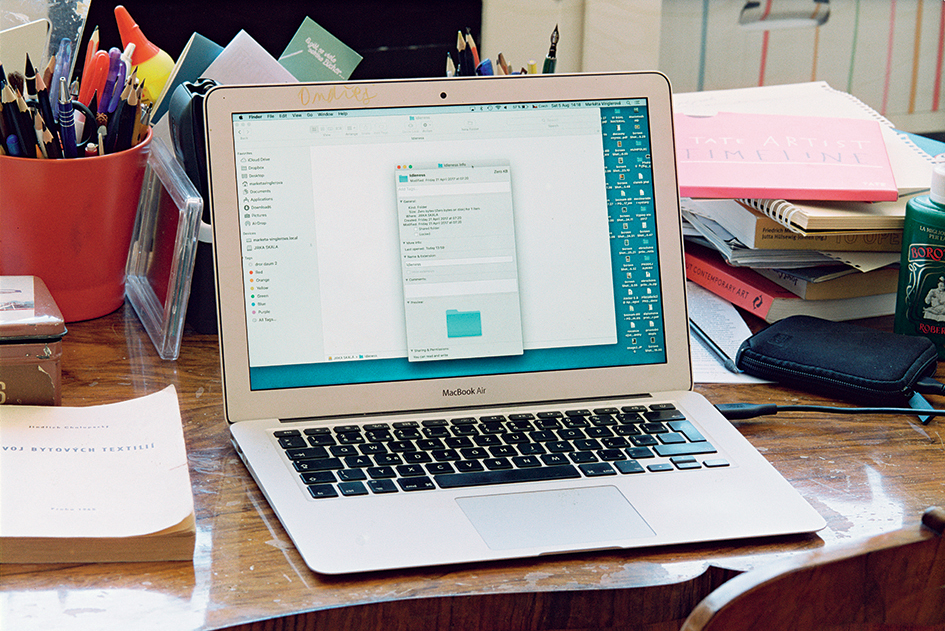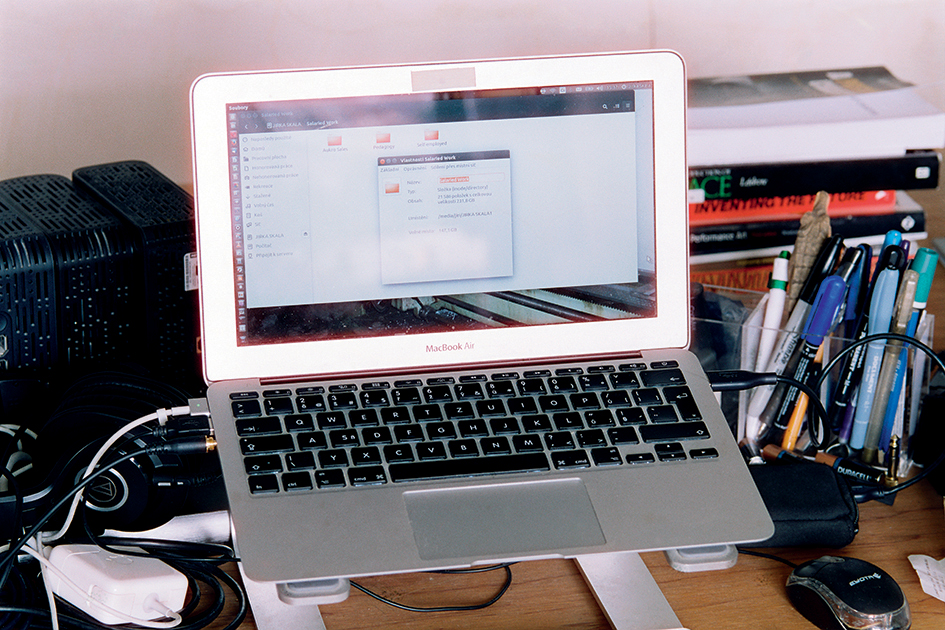Jirka Skála
The Electronic Leash or the Right to Disconnect
A recently established law in France aims to protect workers’ ‘right to
disconnect’. It requires companies of a certain size to clearly define hours
when staff should neither send nor answer emails, and it seeks to ensure
fairly paid work, prevent burnout and protect private time.
Many of us will recognise the feeling of having left our workplace
but not our work, as we remain attached to it by a kind of electronic
leash, created by our portable devices and their never-ending stream
of notifications, which will make no distinctions between day or night,
weekday or weekend, conference or holiday trip, a congratulatory mail or
an adrenalin inducing crisis-management call.
So while it might seem a sensible and logical move, especially in
a country famously fierce about workers’ rights and generally in a world
where differentiation between leisure and work but also consumption and
production have become almost impossible, isn’t it rather symptomatic
for our stubborn belief in clear categories surrounding ‘work’, when the
separation of workplace and home – of working hours and free time –
remained the exception for most of human history?
This did not impede the narrow conception of what constitutes work
that took hold in the 20th century, after economists predicted wage labour
would replace all forms of work, rooted in earlier modes of production
(such as housework, slavery, subsistence agriculture and artisanal crafts)
and made its way into legal codes, state planning and our political
imaginary, while a wide spectrum and complex agglomerate of other lifesustaining
and income-generating activities persisted.
It is exactly in these muddy waters where working conditions
and labour relations, communication, technology, optimisation and
representation meet that Czech artist Jirka Skála (born 1976 in Sušice)
choses to dive into in his practice.
To set a mood, Skála’s work could be described as playful and witty,
more often than not touching upon the theatrical and performative, at
times participatory, and always close to the conceptual. He has developed
the habit of furnishing many of his installations with accompanying texts,
which range from short stories to letters, and to tedious but nonetheless
personal descriptions of his thought-process. Openly flaunting the informal
economies necessary for the production of most artworks, Skála always
underlines the source and drive behind his thinking. More recently, he
has focused on phenomena related to the internet, where consumption
and production merge and leisure and work seamlessly alternate, such as
‘Unboxing’ or ‘Laptopistanians’.
While Skála’s artistic roots lie – unexpectedly – in painting, even
his early works reveal deliberations around subjects that would become
central much later, such as conditions of artistic production and the
inextricability of our various occupations in different aspects of our lives but
also their social and familial implications.
Local Stigma (2004), is perhaps a first step in bidding farewell to
painting while thematising production conditions. Skála films four painters
with a DV camera from bird’s-eye view, as they build, stretch and prime
a canvas in a classical, painterly preparation procedure – the four resulting
films are screened onto the same canvases we can observe in the making,
until the painter-protagonists – their respective tasks having been fulfilled –
walk out of the frame, not only of the camera but also of the canvas-turnedscreen.
Referencing an ‘empty stage’ in the monochromatic tradition, the
drama that unfolds reveals not only fabrication processes invisible to the
regular consumer of the medium but also their use or misuse, depending
on one’s perspective, through the rise of new media.
Two Families of Objects (2007) on the other hand further taps into
Skála’s personal context while referencing an essay written by Umberto
Eco, where the Italian semiotician differentiates between ‘beautiful’
and ‘ugly’ objects. ‘Beautiful’ designating a category of objects that are
desirable, accessible and not accumulable, such as a fashionable piece
of furniture, while ‘ugly’ objects prove to be the opposite i.e. a crane
or hydraulic press – describing their relation to the compliant workerconsumer,
content to work hard for his new refrigerator at the lathe he will
never want nor own.
In the work, Skála confronts us with the image of a turning lathe:
a large and bulky machine his mother had worked on for more than
two decades and which she received as a gift on her 50th birthday,
purchased by her husband from the factory, which in an attempt to prevent
bankruptcy started selling off its machinery. Skála asked his mother to
photograph the lathe and later assembled a series of 14 photographs
from others who in similar situations had acquired production equipment
from companies they had dedicated most of their lives to, either as
memorabilia or to ensure their further livelihood. While depicting large,
lifeless relics of industrial production, which per se do not exactly inspire
much empathy or emotion, the obvious meaning and relation to their new
but not unfamiliar owners and the sudden shift in status that is bestowed
upon both, machine and human, through the change of ownership, makes
for a surprisingly touching reception.
With Art Practice and Other Activities (2017), Skála moves from the
factory worker to a more contemporary labourer, namely the freelancer
and into the perhaps most personal reflection of his work-life balance,
his own backup hard disk. In an attempt to untangle the web of paid and
unpaid, creative practice, hired jobs, employed work and administrative
labour as well as leisure and even idleness and sleep and reveal their
quantified relations to each other, Skála devises eight categories into
which he sorts every single file, in a seemingly systematic but eventually
rather futile trip to self-discovery – because how much do the bits and
bytes at the end really say about us?








#32 non-work
Archive
- #45 hypertension
- #44 empathy
- #43 collecting
- #42 food
- #41 postdigital photography
- #40 earthlings
- #39 delight, pain
- #38 death, when you think about it
- #37 uneven ground
- #36 new utopias
- #35 living with humans
- #34 archaeology of euphoria
- #33 investigation
- #32 Non-work
- #31 Body
- #30 Eye In The Sky
- #29 Contemplation
- #28 Cultura / Natura
- #27 Cars
- #26 Documentary Strategies
- #25 Popular Music
- #24 Seeing Is Believing
- #23 Artificial Worlds
- #22 Image and Text
- #21 On Photography
- #20 Public Art
- #19 Film
- #18 80'
- #17 Amateur Photography
- #16 Photography and Painting
- #15 Prague
- #14 Commerce
- #13 Family
- #12 Reconstruction
- #11 Performance
- #10 Eroticon
- #9 Architecture
- #8 Landscape
- #7 New Staged Photography
- #6 The Recycle Image
- #5 Borders Of Documentary
- #4 Intimacy
- #3 Transforming Of Symbol
- #2 Collective Authorship
- #1 Face
